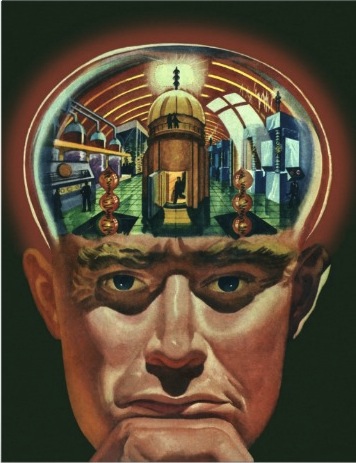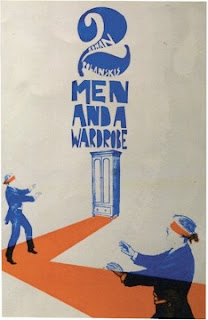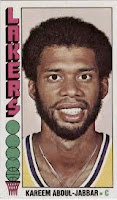 Oddball Films and curator Kat Shuchter present Learn Your Lesson...on Drugs - Shockucational Shorts for the D.A.R.E. Generation, the third in a series of programs highlighting the most ridiculous, insane and camptastic shockucational films and TV specials of the collection. This time, we're taking drugs; that is taking on drugs and the filmic pharmacy is officially open! Melanie and Kathleen are desperate to experiment with drugs in excerpts from Degrassi Jr. High - The Experiment (1987). Creepy double-headed puppets designed by Julie Taymor teach us about intergalactic teens and peer pressure in Deciso 3003 (1982). Benny's the little man on campus and while steroids might make him bigger, they might cost him everything important in Di$ney's Benny and the 'Roids (1988). It might be in Spanish but you won't miss the meaning behind the hilarious cartoon Sex, Booze, Blues and those Pills You Use (1982). McGruff the Crime Dog is back (as a man in a clumsy dog suit and trademark trenchcoat) and he's got a lesson for the kiddies on how to narc on your druggy friends in McGruff's Drug Alert (1987). Sonny Bono gets high (pre-taping) and dons a gold lamé pajama set to tell you all about Marijuana (1968). And because it never gets old, the Oddball favorite The Cat Who Drank... And Used Too Much (1987) will be stopping by. Plus! a multi-projector Celebrity Drug PSA Mash-up featuring Beau Bridges, Paul Newman on PCP, Phil Donahue on crack and Richard Dreyfuss on cocaine! Early birds shall enjoy Narcotics Pit of Despair (1967).
Oddball Films and curator Kat Shuchter present Learn Your Lesson...on Drugs - Shockucational Shorts for the D.A.R.E. Generation, the third in a series of programs highlighting the most ridiculous, insane and camptastic shockucational films and TV specials of the collection. This time, we're taking drugs; that is taking on drugs and the filmic pharmacy is officially open! Melanie and Kathleen are desperate to experiment with drugs in excerpts from Degrassi Jr. High - The Experiment (1987). Creepy double-headed puppets designed by Julie Taymor teach us about intergalactic teens and peer pressure in Deciso 3003 (1982). Benny's the little man on campus and while steroids might make him bigger, they might cost him everything important in Di$ney's Benny and the 'Roids (1988). It might be in Spanish but you won't miss the meaning behind the hilarious cartoon Sex, Booze, Blues and those Pills You Use (1982). McGruff the Crime Dog is back (as a man in a clumsy dog suit and trademark trenchcoat) and he's got a lesson for the kiddies on how to narc on your druggy friends in McGruff's Drug Alert (1987). Sonny Bono gets high (pre-taping) and dons a gold lamé pajama set to tell you all about Marijuana (1968). And because it never gets old, the Oddball favorite The Cat Who Drank... And Used Too Much (1987) will be stopping by. Plus! a multi-projector Celebrity Drug PSA Mash-up featuring Beau Bridges, Paul Newman on PCP, Phil Donahue on crack and Richard Dreyfuss on cocaine! Early birds shall enjoy Narcotics Pit of Despair (1967).
Date: Friday, May 10th, 2013 at 8:00pm
Venue: Oddball Films, 275 Capp Street San Francisco
Admission: $10.00 Limited Seating RSVP to programming@oddballfilm.com or (415) 558-8117
Featuring:
Degrassi Jr. High - The Experiment (Color, 1987)
The Degrassi empire began in 1983 and continues to this day (with a few breaks and reimaginations along the way). With age-appropriate casting and a bent towards taboo subject matter (abortion, AIDS, vibrators, penis pumps, incontinence on top of a cheerleading pyramid) Degrassi has been pushing the envelope for 30 years. In this episode from the first season of Degrassi Jr. High, Melanie and Kathleen are so anxious to try drugs, they buy aspirin off of Joey and have the trip of a lifetime!
Deciso 3003 (Color, 1982)
Peter Wallach, Eli Wallach’s brother directed this bizarre anti-drug PSA, in the height of the “Just Say No” ‘80s. Two couples of double-headed alien teens set out on what they think is just going to be any other intergalactic trip to the Drive-In (to see Vincent Price in The Fly) but when one of them thinks it’ll be cool to take some meteor pills and get handsy with his date, we all learn that being a teenager isn’t easy for anyone in the galaxy. The puppets were made by Julie Taymor, director of Across the Universe and Titus, and Eli Wallach narrates, though neither is credited on the internet movie database. Perhaps, like the teen alien flying home alone, they too feel the shame.
![]()
Benny and the ‘Roids (Color, 1988)

Benny and the ‘Roids (Color, 1988)
Sex, Booze, and Blues, and Those Pills You Use (Color, 1982)
Sex tutorials in fine animated fair come to life in this warning against abuse of alcohol and drugs, and how they can lead to sexual dysfunction.
The Cat Who Drank and Used Too Much (Color, 1987)
Wacky anti-drug film about alcohol and drug using Pat the Cat. He hits the skids before finally reaching out for help - an all-time Oddball Films audience favorite! Narrated by Julie Harris and winner of 24 major awards!
McGruff's Drug Alert (Color, 1987)
Everybody's favorite dog detective, McGruff the Crime Dog teaches children that pills and medicines can be poisonous if they are taken by the wrong people or in the wrong amounts. He teaches also about “illegal” drugs and how to narc on your friends!
 Marijuana (Color, 1968)
Marijuana (Color, 1968)Sonny Bono graces the silver screen in gold lamé to set the facts straight about grass; that he appears utterly stoned himself should not denigrate his message one bit. He systematically counters all the usual arguments in favor of the evil weed (hilariously rattled off one by one by a group of teenagers being arrested).
Words of wisdom in stoner monotone: “Unlike alcohol, when you take too much at one time, you don’t pass out. You more than likely run the risk of an unpredictable – and unpleasant – bummer”.
 Plus! A Celebrity Drug PSA Mash-up featuring excerpts of:
Plus! A Celebrity Drug PSA Mash-up featuring excerpts of:The Perfect Drug Film (Color, 1971)
Hosted by obvious stoner Beau Bridges
Angel Death (Color, 1985)
Hosted by Paul Newman and Joanne Woodward about the dangers of PCP use.
Phil Donahue's Crack Show (1986)
Cocaine Abuse: End of the Line (Color, 1984)
Hosted by Richard Dreyfuss
Narcotics: Pit of Despair (Color, 1967)
The all-time classic of the genre, a real howler! Super-square kid is lured into the world of illicit drugs and other pleasures by the scheming drug dealer and his wanton woman. Sample voiceover: “Take a trip from Squaresville, get with the countdown, shake this square world and blast off to Kicksville!” Sounds good to me!!




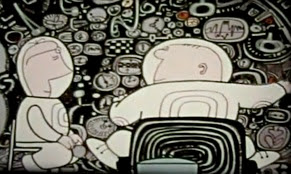


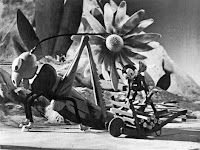


















































+(c)_0005.jpg)



































